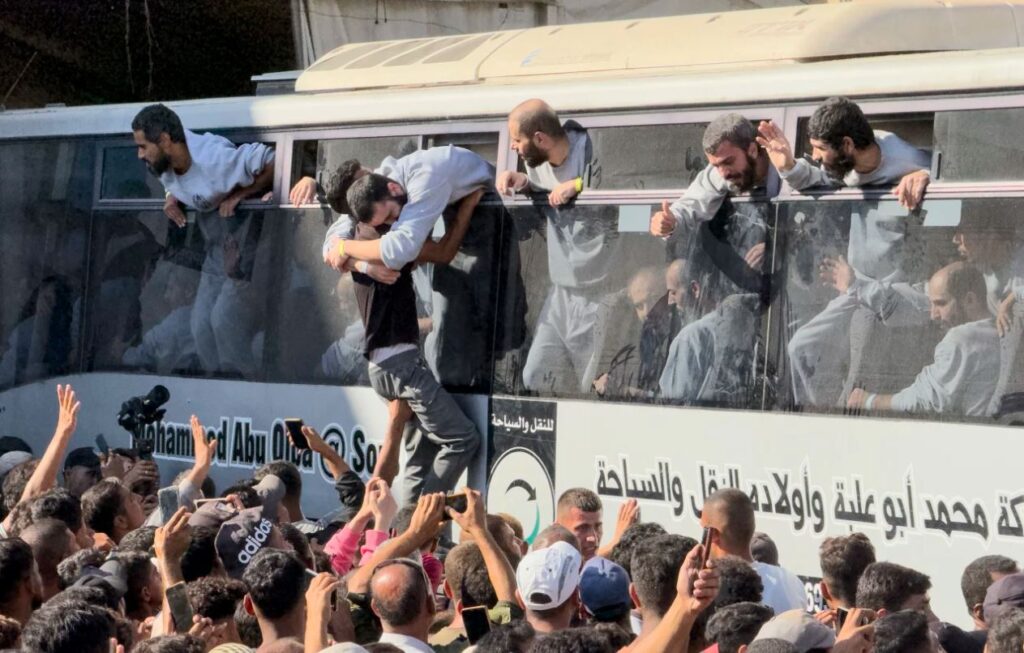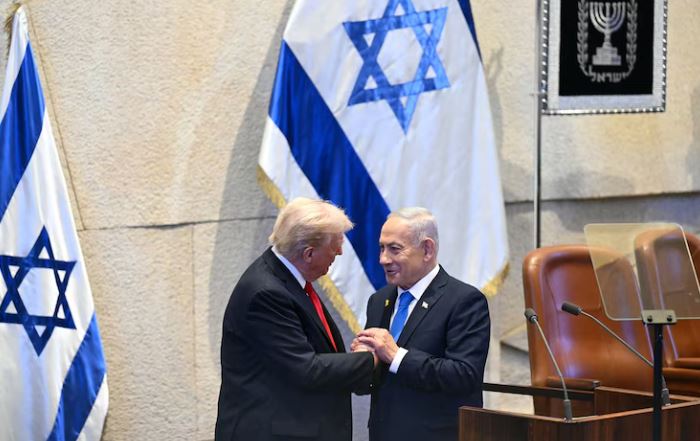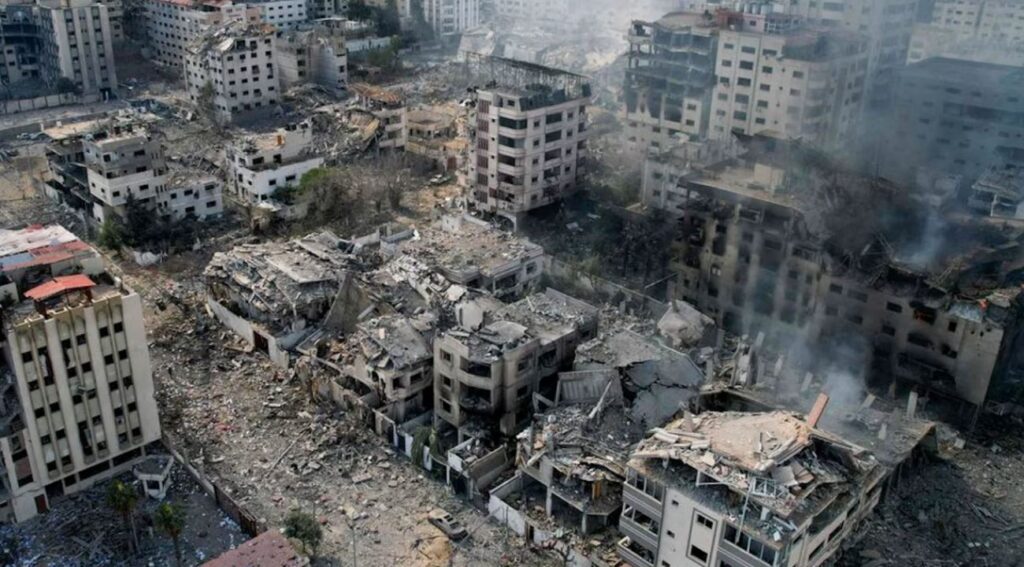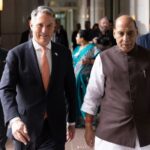TEL AVIV-ISRAEL 13/10/2025 -In a dramatic diplomatic turn, the guns have fallen silent in Gaza. After two years of relentless warfare between Israel and Hamas, a ceasefire brokered under heavy U.S. influence — personally championed by former U.S. President Donald Trump — has paused one of the bloodiest chapters in the region’s recent history.
But beyond the public handshake and the sighs of relief, the truce hides a dense web of strategic calculations, economic manoeuvres, and geopolitical ambitions that could redefine both Gaza’s reconstruction and Israel’s long-term security posture.
A Fragile Peace — Trump’s Second Coming to the Middle East
The October 2025 ceasefire was not born in Cairo or Doha, as many of its predecessors were. It was, in essence, a Washington plan — engineered and branded by Trump, who re-emerged as a self-styled peacemaker seeking to restore U.S. dominance in Middle Eastern diplomacy.Insiders close to the negotiation say the plan was quietly in the works for months. Trump’s envoys maintained back-channel talks with Israel’s war cabinet and intermediaries linked to Hamas through Qatar and Egypt. The framework that finally emerged bore his signature — pragmatic on the surface, but deeply political underneath.
The Ceasefire Deal: A Balancing Act of Power and Pain
The truce agreement, announced in early October 2025 after weeks of behind-the-scenes negotiations in Cairo and Washington, marked a rare moment of consensus between sworn enemies.
Under the three-phase accord:
- Hamas agreed to release all living Israeli hostages — believed to be around 20 individuals — along with the remains of dozens more who died in captivity.
- Israel, in return, approved the release of nearly 2,000 Palestinian prisoners, many of whom had been detained during the two-year conflict or in earlier operations.
- The Israeli Defense Forces began a partial withdrawal from Gaza’s central zones, repositioning troops to its perimeters.
- Humanitarian aid and fuel convoys were cleared to re-enter Gaza under international supervision.
- A joint monitoring mechanism involving Egypt, Qatar, and U.S. observers was established to oversee compliance.

A bus carrying Palestinians released from Israeli prisons is greeted by a crowd outside the Nasser hospital in Khan Younis, Gaza Strip, on Monday.
For families on both sides, the prisoner exchange was the emotional core of the ceasefire — scenes of Israeli hostages returning home were mirrored by the jubilation of Palestinians welcoming their loved ones from Israeli prisons. Yet, both nations remain deeply divided over whether the price paid for peace was too high.It was a calculated display of Trumpian deal-making — one that he called “The First Step to True Peace in the Holy Land.”
Trump’s Real Agenda: Control Through Reconstruction
Behind the rhetoric of peace, the Trump-brokered ceasefire has a clear strategic subtext: reconstruction equals influence.
Trump’s vision — according to leaked diplomatic notes and regional sources — is to reshape Gaza’s future under a donor-led economic model, where U.S.-aligned partners and private investors take the lead in rebuilding, in exchange for access to new trade and development zones.

A consortium informally referred to as the “Gaza Recovery Alliance” is reportedly being designed to manage post-war reconstruction funds. The alliance includes Gulf states, U.S. firms, and selected international financial institutions. The idea is to make Gaza’s economy dependent not on foreign aid, but on structured private investment, tightly monitored to prevent funds from being diverted to Hamas’s military wing.
For Trump, it’s both policy and politics. If successful, it re-establishes the U.S. — and his brand of diplomacy — as the central broker in Middle Eastern affairs, outmanoeuvring European and UN efforts that had stalled for months.
“This isn’t a ceasefire,” said one European diplomat, speaking anonymously. “It’s an economic takeover in the making — with Trump’s fingerprints all over it.”
The Economic Rubble of Gaza
The ceasefire may have silenced the bombs, but Gaza’s economy lies in ruins.Two years of relentless airstrikes, blockades, and ground operations have destroyed more than 60% of the territory’s infrastructure. Electricity grids are shattered, hospitals barely function, and unemployment sits near 80%.

Reconstruction costs, according to regional economists, could exceed $70 billion — a staggering figure for a region with almost no functional government, banking system, or investment channels.The Trump plan proposes to bypass traditional aid routes. Instead, Gaza’s rebuilding will be spearheaded by private development corporations, many of which are rumoured to have U.S. and Emirati ties. Contracts for rebuilding roads, housing, and power networks are expected to flow to firms vetted by Washington and Tel Aviv.
Critics argue that such an approach risks turning Gaza into a “post-war concession zone,” where humanitarian reconstruction is intertwined with foreign business interests. Supporters counter that a corporate-led rebuild may finally bring accountability and efficiency to a place where aid has often been politicised and misused.
Israel’s Calculated Caution
For Israel, the ceasefire is not a surrender — it’s a strategic pause.Prime Minister Benjamin Netanyahu’s government insists that the truce is “conditional and reversible.” The Israel Defense Forces (IDF) have not withdrawn completely but repositioned strategically, maintaining surveillance and rapid-response capacity along Gaza’s perimeters.Tel Aviv’s primary demand remains unchanged: the complete disarmament of Hamas and the prevention of any rearmament efforts under the cover of reconstruction.
Israeli security experts argue that the presence of U.S. monitors and foreign development firms could serve Israel’s interests, acting as a buffer mechanism to prevent Hamas from reclaiming full control.Yet internally, Israel faces sharp divisions. Hardliners within the government view the ceasefire as premature, fearing it rewards Hamas for survival. Moderates, however, see it as a necessary respite — both to repair international reputation and to stabilise the domestic economy strained by prolonged mobilisation.
The Palestinian Dilemma — Between Hope and Dependency
For ordinary Palestinians, the ceasefire brings temporary safety but no certainty.The streets of Gaza are quieter, but the economy is paralysed. The blockade has eased slightly, allowing aid and basic supplies in, but local industries remain collapsed. With most of the youth unemployed and entire families displaced, Gaza risks becoming a dependency state — reliant on external donors for survival and external investors for opportunity.
The real question facing Gaza is who will govern. If Hamas remains in control, international funding will remain limited. If a new technocratic or coalition authority takes shape, it could trigger a new era of oversight — and possibly, hope.Either way, the next 12 months will determine whether the ceasefire marks the beginning of peace or simply another pause before renewed chaos.
The Road Ahead — Between Diplomacy and Deception
Trump’s ceasefire plan may well succeed in halting the violence, but its long-term sustainability depends on what lies beneath: trust, verification, and shared control.Israel remains sceptical, Hamas remains defiant, and the Palestinian people remain caught between promises and politics. The reconstruction phase, expected to begin later this year, will test whether Gaza can be rebuilt without becoming an economic pawn in a global power game.
For Trump, this is more than just a Middle Eastern success story — it’s a campaign card, a statement that he can end wars where others only prolonged them. But as history has shown, peace built on control rarely lasts.
The ceasefire may have silenced the rockets, but the battle for Gaza’s future — economic, political, and moral — has only just begun.











Leave a comment